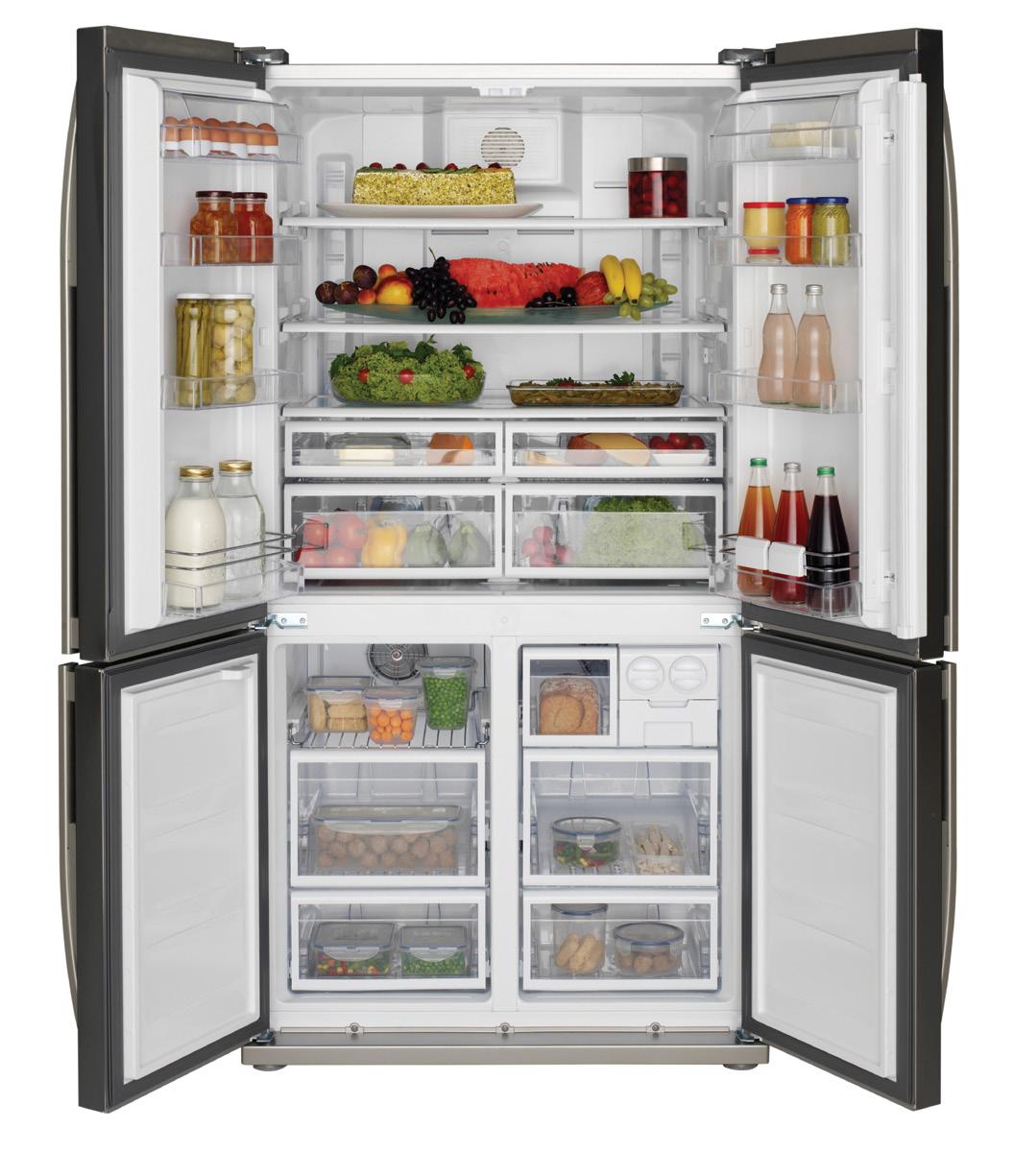WELL+BEING
AN ORGANIZED KITCHEN CAN IMPROVE YOUR
health written by BRANDY (BAXTER) STAYMAN REGISTERED DIETITIAN
We do all sorts of things to take care of our health – go to yearly checkups, exercise, take our medication as prescribed, etc. But what if there is one, often overlooked, strategy that, with a little time investment, could make our day-to-day healthy habits easier? The kitchen is a room most of us use every day in some capacity – whether it’s making morning coffee, grabbing a snack before running out the door or cooking dinner for the family. Since we use it so much for a variety of purposes, spending time organizing and getting a system in place can make healthy eating much easier. Imagine grabbing lunch before work and having veggies already prepped, visible and ready to go. Or cooking a quick meal and being able to easily grab the spices you need at a glance. These, along with many other strategies, can be put in place, regardless of the size of your kitchen or family.
Try these tips to see which ones fit your family best: Make a recipe binder. Each time you find a recipe you like, print it and put it in a binder or filing system. A binder, set of plastic sleeves and hole punch are all you need to get started, all of which can be found at a discount store. If you can divide the recipes into categories or types of meals, you will have a stack of tried-and-true choices. That helps reduce the mental load of meal planning because you’re not re-creating the wheel each week or trying to remember where the recipe is for that casserole you made last month. Have a white board to plan meals for the week. It can be one specific for meal planning or a generic one. Sketching out dinners for the week is an easy way for everyone
Place healthy foods in plain sight and prep fresh produce right after grocery shopping. Getty Images
to see what’s in store. Since dinners are posted on a white board, things can be easily moved to other days if needed. The board can also serve as a visual reminder of what to thaw or prepare in advance. Rotate foods “first in, first out.” This is a golden rule for commercial kitchens, but can be handy at home, as well. When you put away groceries, put what you just bought behind the items already in your pantry or fridge. That way, you use the older items first before they expire. Doing so also makes you aware of what you already have so you buy fewer duplicates. Keep an inventory list on the refrigerator of frozen meals and other foods in the freezer. Have a blank sheet of paper taped to the side of the fridge. As you put foods or meals in the freezer, write down what they are and the date. As you take items out to use them, scratch them off the list. That prevents you from forgetting about the spinach you froze last year that got pushed to the bottom of the freezer. You'll know which freezer meals you have on hand for busy nights when cooking dinner isn’t feasible, which also makes you less likely to grab carryout. Place healthy foods in plain sight. When we’re really hungry, we grab what we see first or what is convenient. Having a bowl of clementines or bananas on the counter can make it easy to grab them on the go, but if they are in the fridge or pantry, they can easily be forgotten. Put veg-































